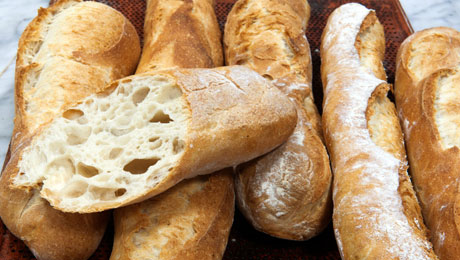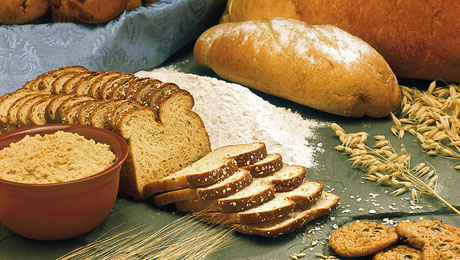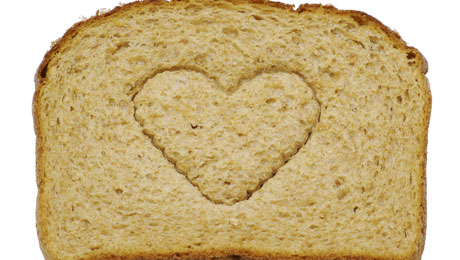Picture: www.clickatlife.gr
Bread is full of nutrients and can be found in every corner of the earth and in every culture. Known as the "staff of life", it has been produced for 30,000 years. It is considered a major food in times of extreme poverty.
It is no coincidence that the World Day of bread, which we noted a few days ago, coincides with the World Nutrition Day, since bread is the cornerstone of our meal. Experts emphasised its importance and nutritional value, and the celebration is a good opportunity to get acquainted with it, as well as with the main types of bread.
Bread is a major food in Europe, as well as in cultures of the Americas, the Middle East and North Africa, as opposed to East Asia, where rice is the main food. It is mainly made of flour and water, with the addition of salt and baking powder, yeast and baking soda, although it may also contain other ingredients, such as milk, eggs, spices, fruit, nuts or seeds.
Usually bread is made of flour and water, mixed with yeast. Due to the high content of gluten, soft wheat is the most common type of grain used to make it.
The nutritional value

Cereals are the foundation of the pyramid of a balanced diet and more and more studies show the importance of their daily consumption. For example, the World Health Organisation recommends its daily use if we want to maintain our health.
Various things have been heard about the contribution of bread in terms of increased body weight and the effect it has on various diseases, and for this reason it is good to clarify this issue. In general, the nutritional value of bread depends on the flour used, and the degree of processing during manufacture.
The most nutritious bread is made of whole wheat flour, which contains significant amounts of vitamins and minerals because during its manufacturing germ and bran have not been removed. Also, it has a very low sugar and fat content, and is a rich source of complex carbohydrates (for energy production in the body and the proper function of the intestine), protein (for growth and maintenance of the muscular system) and vitamins, especially B-complex (with important properties for the body) and its fibres reduce the levels of cholesterol and triglycerides in the blood.
A diet rich in wholegrain bread with a low saturated fat content significantly helps to prevent cardiovascular diseases, certain types of cancer, hypertension and diabetes.
Moderate consumption of bread and the right combination with other foods is the key to a healthy balanced diet.
Types of bread

For the manufacture of bread, besides basic wheat flour, other types of wheat flour may be used (e.g., durum wheat, einkorn), as well as rye, barley, maize and oats, which are generally, but not always mixed with wheat flour.
Thus, there are a variety of breads today, some of which are listed below:
White bread: made of flour, which contains only the central core of wheat (the endosperm).
Brown bread: made of flour derived from the endosperm and 10% bran.
Wholegrain bread: contains all parts of the wheat grain (endosperm, bran, and germ).
Multigrain bread: with a high nutritional value, rich in fibre, vitamins, amino acids and nutrients. It is made of various cereals, such as wheat, rye, barley, oats, maize, millet seeds, poppy, sunflower and others.
Rustic bread: made of flour, which is made exclusively of durum wheat and has a golden yellow color.
Cornbread: bread from corn flour obtained by grinding corn; it has a deep yellow colour, soft texture and pleasant taste.

Rye bread: made of rye flour, which is higher in fibre compared to many of the more common types of bread and is dark in colour, depending on the type of flour used and the added colours. Typically, it is denser than bread made of wheat flour and has more fibre than white bread.
There is also bio bread which is produced from organic flour or organically grown cereal cultures.
There are other types of bread, according to the ingredients added to the flour: olive, raisins, walnuts, and cheese.